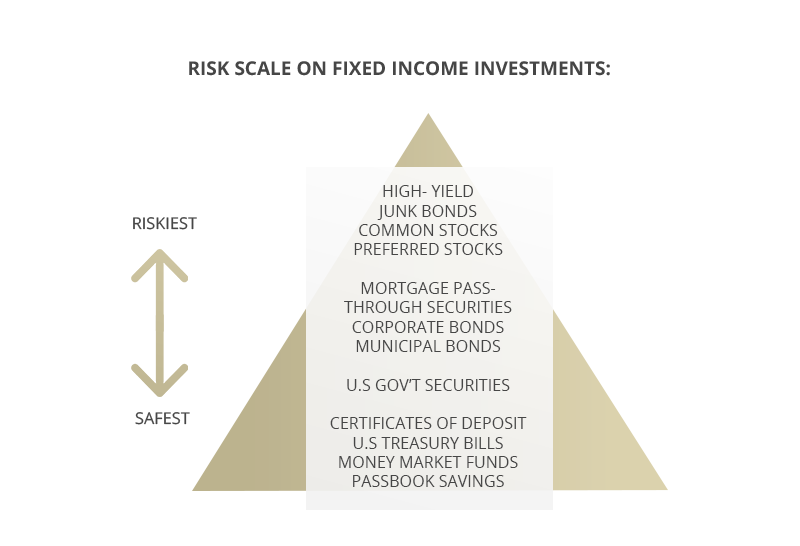In a bond portfolio, the right diversification* strategies can result in desirable risk adjusted investment returns. Diversification* in all of its forms has proven to be a key component of a sound investment strategy and a wealth generation technique. StateTrust's experience and expertise lies in the design of well diversified* fixed income portfolios. We are skilled at creating the kind of fixed-income portfolios that take into account multiple fixed income factors such as credit risk, duration risk, sector risk, and liquidity risk among others.
As a Wealth Management company, StateTrust develops portfolios for our clients that feature government and U.S. agency bonds, municipal and state general obligation bonds, corporate bonds, international debt, emerging market debt, and money market vehicles. We employ a variety of investment techniques to create portfolios that satisfy our clients' fixed-income stated requirements.

* Diversification does not guarantee a profit or ensure against loss.
A bond is nothing more than an IOU:
- An indenture, a document that is considered legally binding, spells out the terms and conditions of the loan.
- The principal is the money that you lend to the bond issuer.
- The coupon outlines the interest rate that the borrower has promised to pay you (some bonds have floating coupons). It represents the cost of money—the interest rate that the issuer has to offer investors to borrow their money.
- The maturity is the period of time before the bond expires. The borrower has to pay you back the principal at the time that the bond expires, whether it is after 10, 15, 20, or 30 years.
- The yield is the return that you get from investing in the bond—the easiest way to measure yield is the coupon yield, which is at the same level as the coupon. The current yield calculates the return by dividing the coupon by the bond's market price. The yield to maturity calculates all of the money you will earn from a bond if you keep it until maturity. This includes interest payments, reinvestment of earnings, and the change in the price of the bond above or below your original purchase price.
- The secondary market is where bonds are traded after they are issued. Bonds can trade at a premium to their face value (more than the principal) or at a discount to their face value (less than the principal).
- Interest rate risk is one of the deciding factors in bond prices—changing interest rates can affect bond prices in either a negative or positive way in the secondary market.
- Credit risk is the other deciding factor in bond prices. This refers to the risk that you might not receive coupon payments and principal on time and in full.
| Fixed Income Portfolio Management Factors | |
|---|---|
| Credit Risk |  |
| Yield Curve Structure |  |
| Sector |  |
| Industry |  |
| Country |  |
| Duration Risk |  |
| Special Factor (convertibility and early call & put options) |  |
Links of interest: